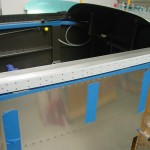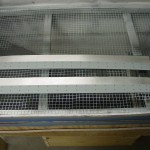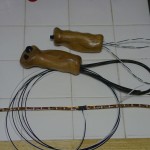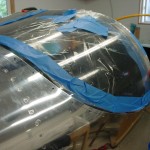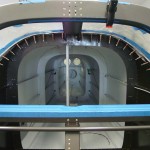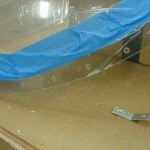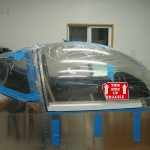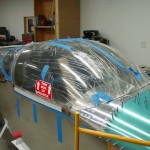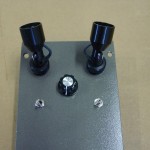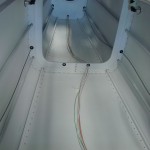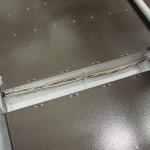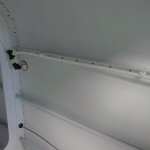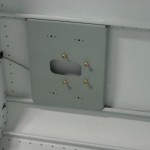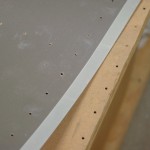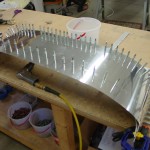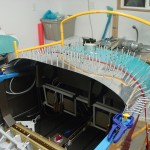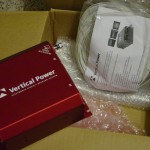Canopy skirts & stick grips
Removed the canopy from the fuselage for eventual sanding to true up the back edge; I also need to read and see how wide of a gap is needed here to allow proper opening of the canopy. Fit and drilled the canopy skirts, the countersunk/dimpled, masked off the area at the top which will get sealant, and primed the rest.
Measured out a section of LED strip light to go under the channel that runs behind the seats; this will serve as baggage lighting for loading/unloading in the dark. The power for this will feed from the center of the strip, so I spooled off some 20ga wire and soldered it on. While I was soldering, I also wired up the pigtails to the stick grip switches; the pilot’s grip got some expandable sleeving to keep all the wires in a nice bundle, as well. Both grips’ wires will terminate in a connector at the base of the stick–either a Dsub or CPC for the pilot, and a 3.5mm mini-jack for the copilot, which will be easy to access to allow for stick removal. I may also have a second PTT somewhere for the right seat, when the stick is removed.
Last but not least, I was able to find a good description of gluing a tip-up (illustrated, even) from Jim Ellis on the Matronics Wiki — I think this is the procedure I will use, minus the screws of course. Fitting the canopy and then inserting the adhesive should be easier and less messy to handle with only two people, compared to applying the sealant bead and then lowering the canopy onto it.
Hours: 4.1 | Posted in Canopy & Frame, Electrical | Comments Off
